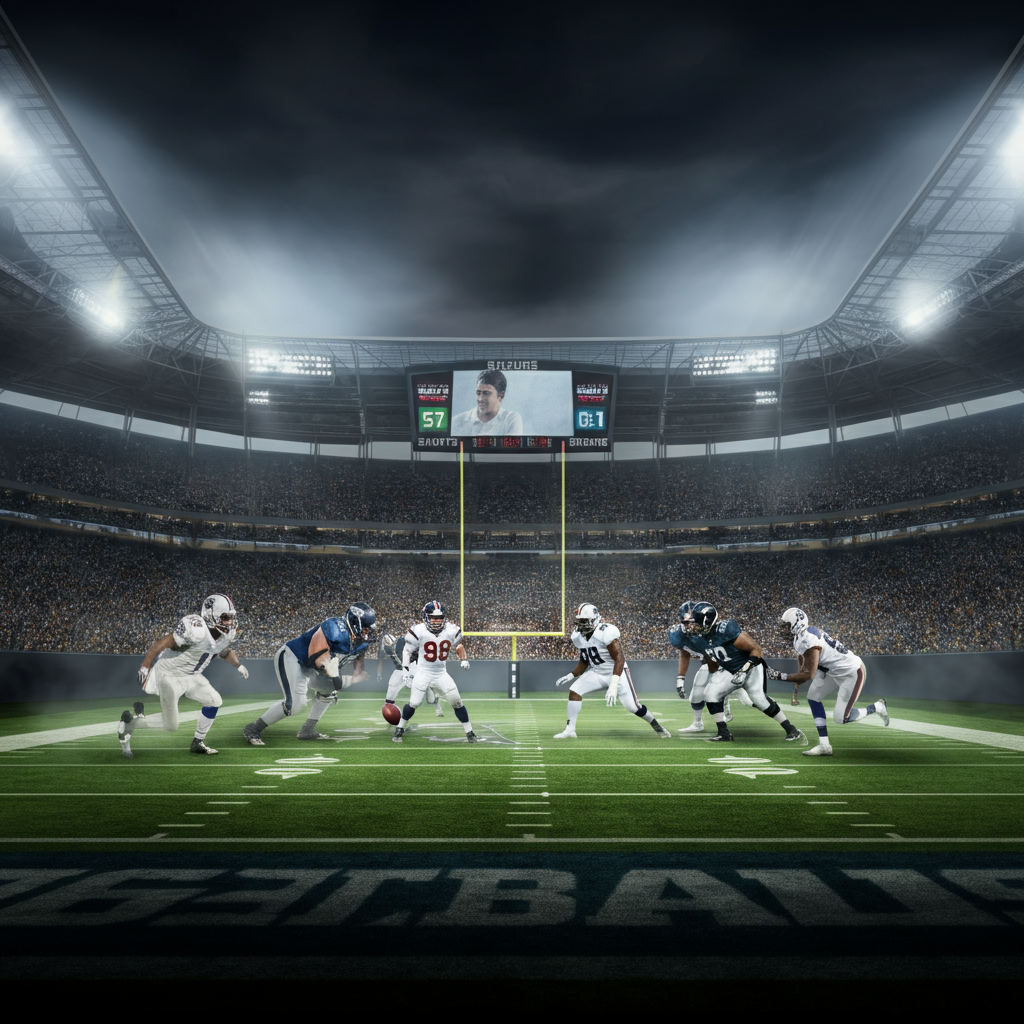Football fans often wonder, “How long is a football game, really?” While the game clock may show just 60 minutes of playtime, the actual time it takes to watch a football game from start to finish is much longer. Many factors influence the duration, from timeouts and commercials to halftime breaks and play reviews.
If you’ve ever wondered why a football game stretches beyond its scheduled time or what contributes to those long hours in front of the TV, this guide is for you. Here, we’ll explore how long a football game lasts, the factors influencing its length, and what to expect when you sit down to watch.
Table of Contents
Standard Game Length
While the basic framework of a football game seems straightforward—60 minutes of playtime spread across four quarters—things get much more complex in practice. Here’s what you need to know about the scheduled and actual game times.
Scheduled Game Time
Both NFL and NCAA football games will last one hour of playtime, broken down as follows:
- NFL: Four 15-minute quarters, totaling 60 minutes.
- NCAA (College Football): Also four 15-minute quarters, totaling 60 minutes.
However, the game clock stops frequently, significantly extending the viewing experience.
Halftime
Halftime adds an essential pause in the game for players to rest and strategize.
- NFL Halftime: 12 minutes.
- NCAA Halftime: 20 minutes, offering a slightly longer break than the NFL.
Total Game Time
Including all interruptions, the duration of a football game often far exceeds the scheduled hour of playtime.
- NFL Average Game Length: Around 3 hours and 12 minutes.
- NCAA Average Game Length: Approximately 3 hours and 24 minutes.
The game can extend even further for a marquee event like the Super Bowl due to additional programming like the halftime show.
Factors Affecting Game Length
Why does a game scheduled for an hour often take three or more hours to complete? A combination of factors contributes to this disparity.
Timeouts
- Definition and Usage: Each team is allowed three timeouts per half, which they can use to pause the game clock strategically.
- Impact on Duration: Timeouts result in stoppages, enabling teams to strategize, and broadcasters often insert commercials during these breaks.
Commercial Breaks
- Frequency and Length: Games include frequent commercial breaks, especially during timeouts, injuries, or play reviews. These breaks typically last 2–3 minutes each, adding significant time to the game.
- Revenue Generation: Networks use these opportunities to air ads, making commercials necessary in modern football in a business sense.
Play Reviews and Challenges
- The Review Process: Coaches can challenge specific plays, prompting officials to review the correct call.
- Time Added: Each review can take several minutes, which adds up throughout the game.
Injuries
- Medical Timeouts: If a player is injured, the game pauses, allowing medical staff to assess and assist the player.
- Duration: Depending on severity, this can lead to prolonged delays.
Special Cases
While regular-season games already tend to run long, there are exceptional circumstances that can make football games even longer.
Overtime
- NFL Overtime Rules: If the game is tied at the end of regulation, a 10-minute overtime period is played. Sudden-death rules apply, meaning the first team to score a touchdown wins immediately.
- NCAA Overtime Rules: College football follows a different format, with teams alternating possessions from the opponent’s 25-yard line until a winner is determined. This setup often results in more extended overtime periods compared to the NFL.
Super Bowl
The Super Bowl, the NFL’s championship game, is a spectacle that goes far beyond just football.
- Halftime Show: The halftime show significantly extends the break, often lasting 20–30 minutes.
- Total Duration: The Super Bowl typically lasts around 3.5 hours or longer, making it one of the most extended games of the year.
Why Games Take Longer Than Scheduled
To better understand why football games run so long, here’s a detailed breakdown of the leading causes of delays during a match:
- Timeouts: Teams strategically stop the clock multiple times.
- Commercial Breaks: Networks maximize ad revenue with frequent commercials.
- Play Reviews: Officials meticulously review critical plays.
- Injuries: Medical pauses add unpredictable delays.
- Penalties: Additional time is spent assessing penalties and moving the ball accordingly.
Frequently Asked Questions (FAQs)
1. Why don’t football games stick to their scheduled time?
The frequent stoppages for timeouts, commercials, and other delays extend beyond the scheduled 60 minutes of playtime.
2. Are college football games longer than NFL games?
NCAA games generally last longer (around 3 hours and 24 minutes on average) than NFL games (3 hours and 12 minutes), partly due to the extended halftime period.
3. How long does the Super Bowl usually last?
The Super Bowl often lasts around 3.5 to 4 hours due to its extended halftime show, additional commercials, and pre/post-game coverage.
4. Can overtime significantly increase the length of a game?
Absolutely. Overtime rules in NFL and NCAA games allow play to continue until a winner is determined, which can add substantial time.
5. How many commercials are shown during a football game?
An average NFL game features around 20 commercial breaks, each lasting 2–3 minutes.
What to Expect From Your Next Football Game
When settling in to watch a football game, expect it to last well beyond 60 minutes of playtime. With commercial breaks, timeouts, and other stoppages, the average time for an NFL game is over 3 hours. For college football and special events like the Super Bowl, the duration can be even longer.
Understanding these factors can help you better plan your viewing experience, whether you’re tailgating or enjoying the game from the comfort of your living room.
Now that you know how long a football game lasts, you’re ready to catch every thrilling moment with no surprises.




